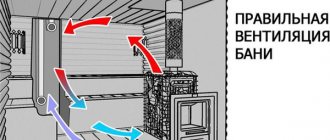Preparing equipment for transportation
Basically, specialists from transport companies that transport large-sized cargo are hired to transport refrigerators. The organization’s employees will do all the necessary work for the person. The refrigerator will be properly packed and transported in compliance with all existing standards. Moreover, such companies, among other things, provide loader services.
Those. a person only needs to call the organization’s office, describe his problem and set a deadline. Payment generally occurs after the work is completed. Some companies require an upfront deposit for the work. This provides them with guarantees that a person will not refuse the ordered service, and, accordingly, employees will not lose their money on transportation costs.
If your refrigerator is broken, you can use our services and leave it to the professionals!
We offer you:
- Free visit and diagnostics for further repairs;
- Free consultation by phone;
- It is possible to deliver the refrigerator to a service center;
- Warranty up to 3 years;
- We use original spare parts;
- Certified masters;
- We provide a receipt and warranty card;
Leave a request and receive a 15% discount.
Submit your application
The second transportation option is hired transport. It is better to order trucks with high sides or with a van whose walls are made of durable material, because... During transportation, the refrigerator can move from one side to another. To avoid this, a person must securely secure the equipment before starting the trip. Otherwise, damage will be caused not only to the refrigerator, but also to the vehicle in which it was transported. In the worst case scenario, the unit may simply fall onto the road and cause harm to other road users. All this can be avoided by securely securing the refrigerator using special devices.
You can also move the refrigerator using personal transport. For this it is better to use at least a GAZelle. It is possible to transport the unit in a passenger car, but this is associated with a number of difficulties. In addition, traffic police inspectors can issue a fine to a person for transporting oversized cargo in improper conditions.
The second option is used by most people. Therefore, many of them have a question: how to transport a refrigerator correctly. Before transporting equipment, a number of preparatory measures must be completed. Otherwise, the correct operation of the refrigerator may be impaired. After arriving at your destination, it simply won't turn on.
You can begin transporting the refrigerator only after careful preparation. To avoid damage to equipment during transportation, it is recommended to adhere to a number of simple rules:
- Turn off the power to the refrigerator and unload everything you can from it. Moreover, not only products are pulled out of the unit, but also shelves and drawers.
- Wipe everything dry. After defrosting, condensation may remain inside the equipment, which will damage the internal parts of the unit during transportation, especially if it is carried out at subzero temperatures. Before transportation, you must thoroughly wipe all parts of the refrigerator with a dry cloth.
- Equipment located inside the vehicle is transported separately. Particular attention is paid to glass shelves. They must be lined with special paper or foam rubber. This will help avoid damage during the trip.
- Secure the door. All parts of the refrigerator that may open when shaking on the road are securely secured with twine or tape before the trip. It is better to do this in at least two places. A door that opens on the road may break.
- The outer body of the refrigerator is covered with foam or wrapping material. This will avoid scratches on the surface that will inevitably occur when the refrigerator moves on uneven roads. If a person is unable to find wrapping material for the entire body of the refrigerator, at least the outer corners and protruding parts need to be protected. They are all more exposed.
By following these simple recommendations, a person will reduce the risk of damage to equipment when transporting it from one place to another.
Preparing to transport the refrigerator
To prevent possible damage to refrigeration equipment, it is necessary to plan the transportation process, pack household appliances well and securely secure the unit inside the truck. The best option, in case of transportation by car, is to pack the refrigerator in the box in which it was purchased. When this is not possible for some reason (the box was thrown away or seriously damaged), you need to wrap the unit in the following materials in the specified sequence:
- the body is wrapped in thick paper;
- after paper, you need to wrap the unit with hard cardboard;
- When the paper and cardboard are secured with tape, they are additionally wrapped in bubble wrap.
It is prohibited to transport refrigeration equipment as is, that is, without pre-packaging. When the unit is new, the manufacturer must worry about its safety and reliability of packaging even before the household refrigeration equipment arrives at the store warehouse. If you plan to transport a refrigerator that has already been used, then it must be packed after preliminary preparation. This stage (preparatory) is started one day before the time of transportation and the following algorithm of actions is followed:
- The freezer and refrigerator compartments are freed from food products present in them.
- The unit is disconnected from the power supply (from the outlet) and it must stand until it completely defrosts.
- The external and internal surfaces of refrigeration equipment are carefully wiped using a neutral cleaning agent - the best option is a soap solution at room temperature (+16...+25 ̊C).
- All niches, shelves, drawers and other easily removable elements are removed from the refrigerator cabinet and packaged separately from the unit in soft material or thick paper.
- Before transportation, the refrigerator must have time to dry after wet cleaning inside it, so the doors are left open for a while.
The compressor must be secured using transport bolts or rope. Otherwise, due to strong shaking in the car body, the compressor is able to move. The power cord is carefully fixed to the compressor with tape. In non-standard models that do not fit into the doorway, the doors are removed or the door and jamb are dismantled, increasing the space for maneuver.
Attention! The unit doors are also secured with tightening straps, rope or masking tape so that they do not accidentally swing open due to shaking and come off.
Loading begins only after all preparatory measures have been completed. To carry the refrigerator from the premises to the vehicle and vice versa, at least two people are required. Lower household appliances down the stairs with all possible precautions so that the housing does not touch the steps, walls or ceiling. The task can be made easier by using a trolley, special safety belts or a pallet with wheels. The unit is loaded into the body so that it is not accidentally hit, but holding onto the refrigerator door handles is prohibited.
General transportation rules
The need to move the refrigerator may arise if:
- a person bought a unit in a store and plans to save on delivery to his home;
- a family moves from one apartment to another;
- We plan to transport the refrigerator to the dacha or to friends.
Full information about possible modes of transportation is mainly found in the instructions.
According to those organizations that produce refrigerators, units should be transported in a standing position and not in a lying position. This is due to the fact that there is oil in the compressor. If the refrigerator is transported in a lying position, it may spill out and enter the heat exchanger. This is fraught with unpleasant consequences, including failure of the unit, which means additional financial losses.
After loading into the car van, the refrigerator must be installed in a strictly vertical position, after which it is securely secured using locking devices. This is done to ensure that the equipment does not move around the premises during transportation. Otherwise, the unit may also fail by hitting the wall of the van.
Note! If the refrigerator is not secured, only an iron box will arrive at its destination, which remains to be turned over for metal.
However, a person cannot always adhere to these rules. Especially when you need to transfer a large unit with a height of more than 2 meters. Not all vans can accommodate such a refrigerator. The upper part of the machine does not have the necessary dimensions. In this case, it is physically impossible to place the equipment in a vertical position.
This is where a person begins to wonder how to transport a refrigerator in a horizontal position. After all, there is no other way to move the equipment. Device manufacturers have also developed a number of recommendations in this regard. By completing them, the owner will be able to bring his refrigerator to its destination in good condition.
Modern refrigerators equipped with the No Frost system are associated with a number of transportation difficulties. They can only be transported in a strictly vertical position. If you ignore this requirement, a simple iron box that does not carry any useful functions will reach its destination. This is due to the structural features of the internal mechanisms of refrigerators of this type. If they are transported horizontally, the motor may break off the inner spring. Only specialists can correct this damage.
At the same time, we should not forget that even if the equipment was transported in compliance with all existing rules, after it was brought to a new place, it cannot be immediately turned on. It should stand for some time. For refrigerators, this indicator varies from 2 to 24 hours. No Frost units can be turned on half an hour after the end of transportation. During this time, the oil that was displaced during transportation has time to return to the engine. If the refrigerator is turned on before this time, the motor will begin to heat up and fail, and the unit itself will cease to perform its freezing functions.
The most durable refrigerators are considered to be Soviet-made units. As practice shows, they are able to survive more than one generation, continuing to properly perform their functions.
However, the transportation of such refrigerators also has a number of features. They cannot be transported on the back or side. It's all about the design features. The units are equipped with a heavy compressor. Often a good vibration is enough to cause them to come off their mounts. Finding a specialist to repair this type of refrigerator is not easy these days.
Passenger cars are often used to transport such refrigerators. In this case, certain skills are required from the driver in order to bring the unit to its destination intact and safe. You should try to avoid uneven roads and avoid making sharp turns. When manually moving the unit from a vehicle to an apartment, great care should also be taken. The refrigerator must not be thrown or moved suddenly.
Soviet refrigerators are also not recommended to be transported in winter. As a rule, such units contain obsolete oil. All the time it becomes more viscous. At negative temperatures, the viscosity of the substance increases. Accordingly, there are more chances that Soviet refrigerators will fail after transportation in winter than modern models. This is primarily due to the age of production. Moreover, many owners do not bother to carry out the necessary maintenance of old refrigerators at home.
However, transportation of any equipment in winter has its own characteristics. This statement applies not only to refrigerators, but also to other devices. This is a complex process that requires increased attention.
The basics of transporting a refrigerator horizontally: is this position dangerous?
Of course, you can handle the transportation of the refrigerator yourself without spending money on the services of transport companies. However, is it worth saving? The answer to this question depends on the dimensions of the unit. You can transport a small single-compartment refrigerator yourself in the back seat or in the extended trunk of a car, carefully packing the device.
But what to do if we are talking about a huge two-chamber refrigerator weighing under a hundredweight? Here you simply need the help of professionals. Otherwise, subsequent costs for repairing equipment damaged by improper transportation will be many times greater than the imaginary savings. And ordering special transport is not too expensive.
Professional cargo carriers not only deliver oversized equipment to the address, but also provide “related” services:
- Assess the size of your refrigerator and select a suitable vehicle for transportation;
- They form routes for delivering several cargoes at once in one go, which allows them to keep the price level at a reasonable level;
- Pack the unit and load it safely into the car;
- Take charge of the descent/ascent to the floor if necessary;
- They accompany the household appliance to its “new home”, take it out of the car, unpack it, assemble it and prepare it for use.
Read more: Gas boiler room for an apartment building: pros and cons
The cost of transportation depends on the dimensions of the refrigerator and the length of the route, as well as on the list of additional services. The total price of transportation will be from 2500 to 6000 rubles.
The attached device will not fall during turns and slopes of the road, as a result it will remain intact
If vertical loading of a household appliance is not possible, which, as we understand, is the most optimal for transportation, then the refrigerator can be placed sideways, observing a number of the following rules:
- Place the device so that its doors are not pressed against anything; it is advisable that their hinges point upward, as does the tube that transmits freon for cooling the refrigeration chambers.
- To secure all moving elements (compressor and doors), you must use special fixing belts or tape. This will prevent the structure from deformation.
- Pay attention to the surface where the refrigerator will rest. It is important to first cover it with a thick old blanket or any other thick fabric. Next, fix the refrigerator in this place so that it does not slide on the body or trailer; it is ideal to leave two people who will additionally hold the equipment.
- Loading and unloading the device should be done carefully, without grabbing the doors, as you can easily tear them off their hinges, and putting them back in place will be very troublesome.
- If it is not possible to secure the internal shelves and containers inside the refrigerator, it is better to remove them and transport them separately from the equipment.
Maintain a uniform plane when transporting the refrigerator; slopes in a lying position will lead to bending of the walls or doors of the unit
Transporting a new refrigerator in a box
In many cases, after purchasing, it makes more sense to deliver the refrigerator to your home yourself, rather than with the help of transport companies. This is mainly due to the reduction of financial costs for the buyer. Difficulties rarely arise here. In the store, the unit is wrapped in special packaging, so there is no need to additionally protect it from possible mechanical damage that may occur during transportation. In addition, in most cases, the packaging of the equipment contains special markings, by which a person can determine which side of the refrigerator can be placed on and which not. Here are general recommendations for transporting the unit. The buyer just needs to stick to them. This will help bring the refrigerator home in good condition.
Note! Some equipment manufacturing organizations refuse to fulfill warranty obligations if it turns out that the refrigerator was transported in a horizontal position. It is better to clarify this question with the sellers in advance.
When is it necessary to transport a refrigerator?
It is necessary to note the following situations in which it is necessary to transport equipment:
- purchasing a new refrigerator in a store or from someone else;
- moving from an apartment or office;
- selling a used refrigerator to another owner.
Note! The difficulty is that the refrigerator should be transported only in a certain position, which was recommended by the manufacturer. In addition, it often becomes necessary to hire a cargo gazelle with a side height of about 200 centimeters (if the height of the refrigerator is more than 170 centimeters).
To transport a refrigerator you will need a cargo gazelle
Transportation rules
Experts recommend transporting any refrigeration equipment only in a horizontal position (standing). Of course, if you purchase a new device, then, as a rule, the store’s specialists do the delivery themselves, so you don’t have to deal with problems.
But, it is necessary to take into account that the refrigerator remains operational if the following recommendations are followed:
- Only in a truck with high sides is it possible to carry it vertically (with such transport there is no mixing of oil with refrigerant in the tubes). In addition, in any instructions you can find such a note that even after proper transportation, the refrigerator should not be used for several hours - it should stand.
- The device box and foam panels for shock protection must be present. That is why you should not rush to throw away the packaging, even if the warranty period has expired, if you plan to move.
- All structural elements must be covered with protective oilcloth during transportation to prevent negative impacts from vibrations.
- Cargo taxis must be equipped with special clamps to secure the equipment firmly.
When purchasing a new device, the store takes on all the difficulties associated with its delivery.
Note! Store employees will immediately void the product warranty if they find out that the buyer intends to transport the device horizontally. Even if there is a manufacturing defect, it will no longer be possible to return the refrigerator.
Prices for popular refrigerator models
Fridge
Video - Why it is prohibited to transport refrigeration appliances on their sides
Moving with an old refrigerator
If a person needs to move a refrigerator that is not packaged in a branded box or protective shell, it is best to place it on its side when loading it into the van. The equipment must not be positioned so that the door or back of the equipment is adjacent to the bottom of the machine. In the first case, a person risks damaging the handle and causing difficulties in opening the door. In the second, damage to the tubes and grilles. The unit is positioned so that the coolant tube coming out of the compressor faces upward. This will prevent damage to the internal mechanisms of the cooling unit.
In this case, during transportation, oil will flow into the return part of the conductor. After the refrigerator is installed in its normal parking location, the lubricant will flow back into the compressor without damaging other internal mechanisms. This will happen a few minutes after placing the refrigerator in a vertical position. Therefore, it is impossible to turn on the unit immediately after delivery to its destination. This may lead to its failure.
If the unit is transported in other positions, this will cause oil to leak out as the refrigerant flows. When the compressor is turned on, it will try to push even further. This will cause the capillary tube to become clogged. In this case, the engine piston system will work with excessive effort. Sooner or later the equipment will fail because of this.
In order to avoid the unpleasant consequences of transporting a refrigerator, a person must find out in advance in which direction the liquid is moving. This must be done before the refrigerator is loaded into the vehicle. Otherwise, after some time a person will have to buy a new refrigerator.
Transporting an old “Soviet” refrigerator when moving
Soviet models of refrigerators are more resistant to transport deliveries; they can be transported not only in a car trailer, but also on the top trunk, after laying down thick fabric so as not to damage the paint coating. In addition, even old types of refrigerators “Dnepr”, “Oka”, “Salyut”, “Odessa” are prohibited from being placed on the rear (engine down). But they can be transported lying on their side.
Before transportation, the refrigerator must cool down; to do this, disconnect it from the power supply in advance.
Although the external design of “domestic” units is durable, mixing of freon and oil can occur at any time. Typically, this condition cannot be repaired.
After the warranty period has expired, do not throw away the packaging from the device; it will be useful in case of transportation.
Determining the exit of the cooling tube from the compressor
All refrigerators operate on similar principles. The refrigerant, which is in a gaseous state, is moved by a motor to the condenser. Here it gives off the heat that it picked up in the cooling chamber, after which it turns into liquid. In order for a person to understand through which tube freon moves from the engine to the condenser, a person needs to turn on the refrigerator and, at the moment when gases and liquids begin to move through the internal mechanisms of the unit, touch the tubes that extend from the compressor. Here you need to focus on their temperature. The tube that is warmer (sometimes even hot) leaves the compressor towards the condenser. This is the item you are looking for. When transporting the refrigerator in a horizontal position, the found tube must face upward so that oil does not get into the internal mechanisms of the unit, and, accordingly, so that the refrigerator does not fail.
On some models, all pipes are located in one part of the engine. Moreover, on the first turn they will have the same direction. Accordingly, when the refrigerator is placed in a horizontal position, they will all face up. This greatly simplifies the task of transporting equipment for carriers. A person does not have to recognize the direction of movement of working fluids.
Note! During operation, the tube can reach high temperatures. To avoid getting burned, it is recommended to touch the parts of the device with great care.
How to pack?
To transport the refrigerator lying down correctly and safely, you will need:
- original packaging (if preserved) or bubble wrap packaging - it can be purchased at a hypermarket;
- packaging of masking tape - it is convenient to tear it off by hand, which saves time;
- scissors - cut off the film;
- newspapers - usually there are a lot of them and are placed in mailboxes for free as advertising;
- factory transport spacers to secure the compressor or screws;
- paper towels or moisture-absorbing wipes;
- pieces of cardboard, rags or old blankets.
Without packaging you will not transport the refrigerator correctly!
Your actions, including if you are transporting the refrigerator horizontally:
One day before:
You need to carefully and carefully pack your unit to reduce the risk of damage:
- Find the instructions for your refrigerator and look at the rear circuit layout diagram.
- Determine the discharge tube with the device running. Do this manually or check the instructions.
- Prepare factory packaging or packaging materials
- Unplug the refrigerator and remove the food.
- Defrost the device, drain the water, and wash the shelves. To save time, use paper towels or napkins to absorb moisture. After wiping, still dry it open.
- Take out everything that can be removed - containers, grilles, shelves, doors, glass. Wrap the glass with bubble wrap. Doors that could not be removed, for example from a freezer, should be secured with tape. Nothing should open or move inside the refrigerator.
- Secure the position of the compressor with factory-installed transport spacers or screws. If they are not there, crumple up sheets of newspaper and position them so that the compressor and other moving parts of the circuit are immobilized. Secure the position with tape, if necessary, wrap it around the refrigerator.
- Wrap the entire refrigerator in several layers of bubble wrap and secure it with tape.
It’s great if the original packaging has been preserved - the preserved properties of polystyrene foam are difficult to achieve from other materials. In addition, in modern models it indicates the side on which the device can be placed.
Tip: if you can’t get bubble wrap, wrap the refrigerator in several layers of textiles, a layer of cardboard, and then secure it with adhesive tape. This measure will prevent scratches and chipping of the coating on the surface of the device.
If you are buying a used refrigerator, ask for the model and look at the instructions. Ask if the refrigerator has been cleaned and ask to fix the compressor. You should understand that refrigerators are usually sold second-hand for pick-up, so as soon as you give the money, the former owner will not care how you transport your refrigerator - even with the freezer down the stairs. And you won’t be able to complain about its performance: the refrigerator could have been fully functional before transportation, which resulted in its malfunction.
On the day of transportation:
The removal of the refrigerator from the entrance must be carried out on the correct side, and the side along which the discharge tube passes must be the top. When moving down stairs, the compressor should be at the bottom while maintaining a generally horizontal position.
The same conditions must be met when bringing the refrigerator into the entrance in order to maintain its working condition.
How to transport it in a car?
Ideally, the rented gazelle is equipped with clamps and stops, and the height of the side allows you to transport the refrigerator vertically. When transporting horizontally, the refrigerator will still have to be secured on the correct side. If you are transporting it along with other things, place bales of textiles on the sides of the device or prop it up with upholstered furniture.
When transporting a short distance of a couple of blocks at low speed (40-60 km/h) on a flat road, the refrigerator does not need to be fixed: it has a large mass and is therefore inert. In all other cases - when transporting over significant distances with unpredictable road terrain and traffic congestion - find a way to do it.
Before transportation, place several layers of cardboard or soft foam material, such as isolon, on the bottom of the body.
Is it possible to transport the refrigerator lying on the back wall or door?
According to established rules, all models of refrigerators cannot be transported on the door or back wall. However, some manufacturers still provide this possibility. If this is the case, then the relevant information should be on the original box or in the user manual. To avoid troubles, it is better to consult the seller of the product or find the manufacturer’s website on the Internet before traveling. Such resources contain all the information regarding a particular model of equipment. Here are the rules for transporting equipment. Moreover, recommendations are given for transportation in every possible position.
How soon after moving can you turn on the refrigerator?
After the refrigerator has been in a horizontal position for some time, it cannot be put back into operation immediately. Before starting use, it must stand upright for at least 3-4 hours. During this time, under the influence of gravity and other physical parameters, the oil that has leaked from the reservoirs flows back into the engine and goes to its normal place. If the refrigerator is plugged in before this happens, the motor will fail. A person will have to turn to specialists for help or buy new equipment, since the old refrigerator will not be able to perform its functions, and its use can be dangerous for the owner.
However, we should not forget that each model is individual in its own way. Also, the refrigerator is transported in different weather conditions. Therefore, it is not possible to calculate the standard time for the oil to drain into the engine. It is believed that at least 2 hours pass from the moment the refrigerator is installed in a vertical position until its functionality is restored. However, it is recommended to take extra time. Experts advise not to plug in the refrigerator for 5 hours after it is installed in its normal place. This will help avoid possible problems and increase the performance of the unit.
What problems can occur if the refrigerator is transported incorrectly?
According to service workers for large kitchen appliances, a third of refrigerator breakdowns occur as a result of improper transportation.
If after transportation the refrigerator does not turn on or problems appear in its operation, try to determine the cause of the failure yourself.
The compressor in the new refrigerator does not turn on
The following problems can cause similar consequences:
- manufacturing defect;
- electrical wiring violation;
- engine damage.
If problems occur, contact the service center using the warranty card. If there is no warranty, call a service technician and do not attempt to repair the equipment yourself.
The new refrigerator does not freeze, but the compressor turns on
If the compressor turns on, but the refrigerator does not freeze, most likely the cooling system has depressurized. This happens if the system tube has been torn or cracked, causing the refrigerant to evaporate. It is necessary to find the leak, repair the system and refill the freon.
Doesn't turn on
If the device does not turn on at all, it means that the cooling system, thermostat or electrical wiring inside was damaged during transportation. It will be extremely difficult to determine the cause of the breakdown on your own without the proper experience and knowledge.
The engine may have seized. Try turning off the refrigerator for a few hours and turning it on again. If this does not help, call a specialist.
After transportation, ice or snow began to form in the chamber
Such consequences are possible if the sealing of the chambers has been broken. Seals, rubber bands, door hinges, and external body elements could be damaged by vibrations and shaking while the car is moving. To fix the problem, check the integrity of all external elements and fix them. If this does not help, call a technical service representative.
The compressor does not turn on in a used refrigerator
If the refrigerator was working properly before moving, and then the compressor stopped turning on, it is possible that sediment in its lower part mixed with oil. You can solve the problem by warming up the engine with a hair dryer or fan heater for 20–25 minutes. If this does not help, you will have to seek professional help.
The main or freezer compartment began to work worse
Similar consequences are observed if a plug has formed in any part of the system, which can only be removed by a qualified technician.
It is worth noting that in double-circuit refrigerators the causes of such a breakdown may be:
- refrigerant leak in one of the circuits;
- malfunction of the camera temperature sensor;
- malfunction of the thermostat.
A breakdown that occurs due to such reasons can only be repaired by a specialist.
The old refrigerator started to get very cold
If the evaporator was covered with ice, it melted during transport and the system began to work as it should. There is no need to fix this problem, just adjust the sensor to the optimal temperature.
The old refrigerator does not freeze, the compressor works
Such problems can arise due to two reasons:
- a plug of sediment has formed in the cooling system at the bottom of the compressor;
- A refrigerant leak has occurred due to a compromise in the integrity of the system.
In both cases, only a specialist can fix the problem.
How to transport a refrigerator in winter
At negative outside temperatures, the viscosity of the oil inside the unit increases several times. Accordingly, after the refrigerator enters a warm room, it needs more time to restore its functionality.
Before the oil can regain its fluidity, it must warm up. The same applies to other liquids and gases that help cool the installation. Until the oil reaches a certain temperature, it will not be able to calmly drain back into the compressor. If you start the device before this happens, it will start to heat up and quickly fail.
If in normal times, after transporting the refrigerator, it must remain in its normal place for at least 2 hours, then in winter this parameter increases to a full day.











